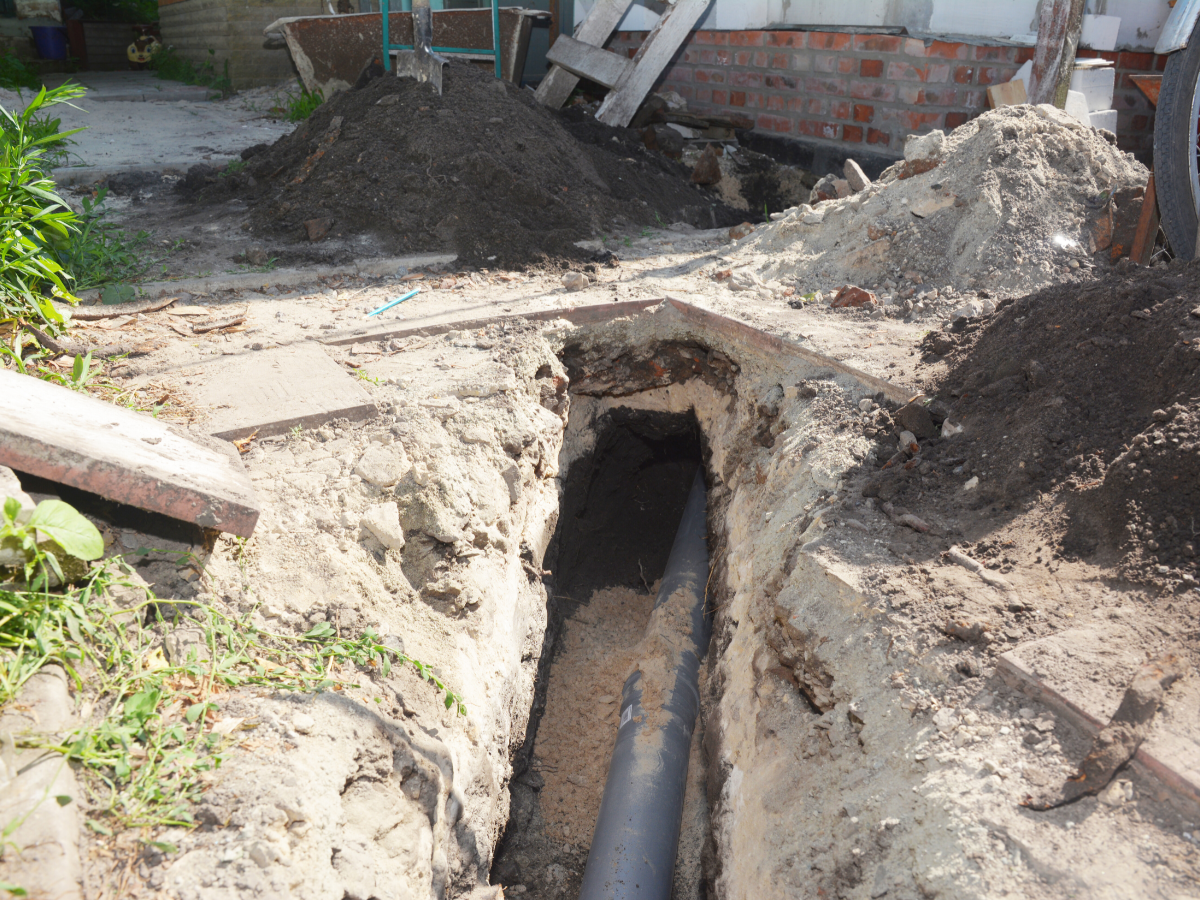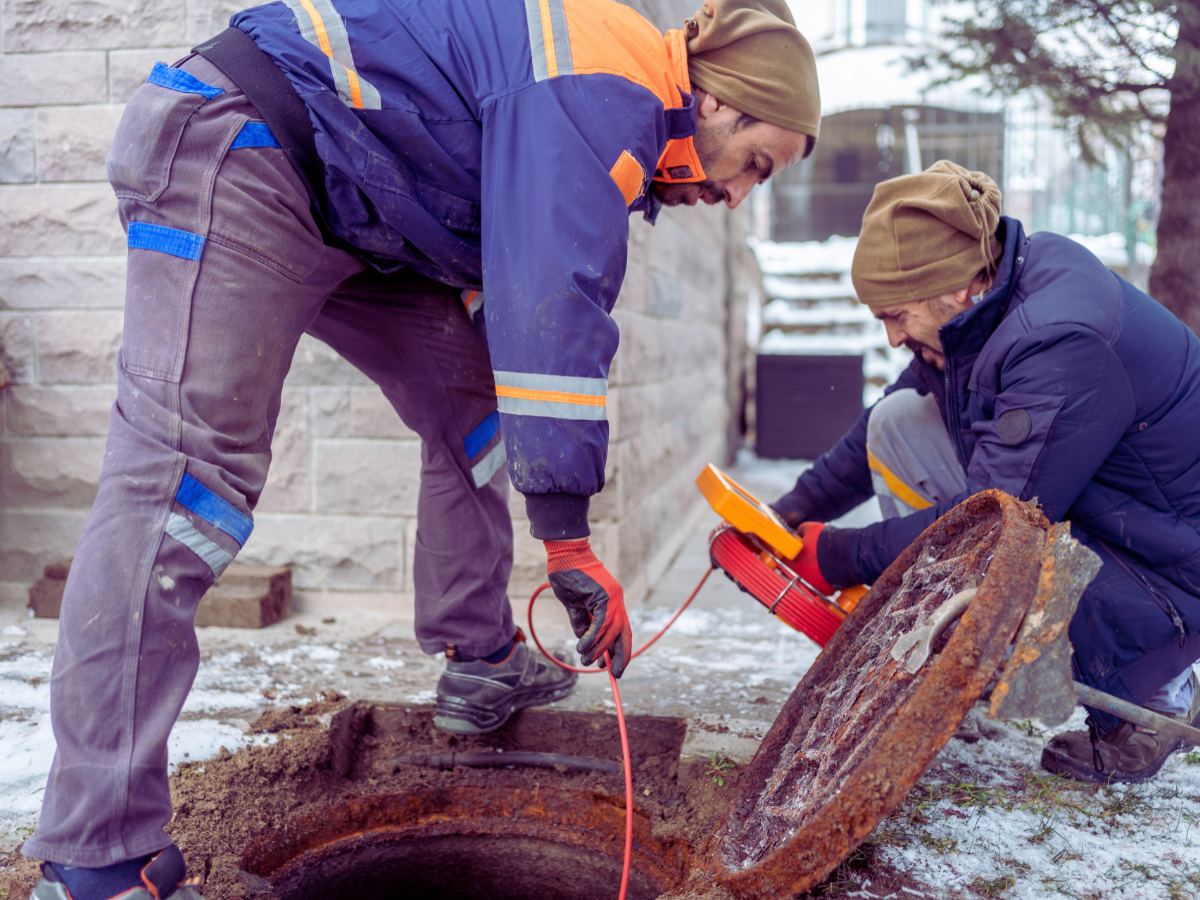 If your sewer line starts to sag, you might develop the much-dreaded sewer line belly. This plumbing problem refers to a sewer line that dips down in the middle instead of running in a straight line from your house to your sewer. A sewer pipe belly prevents gravity from moving wastewater, so debris will start to collect in the dip and result in costly plumbing issues.
If your sewer line starts to sag, you might develop the much-dreaded sewer line belly. This plumbing problem refers to a sewer line that dips down in the middle instead of running in a straight line from your house to your sewer. A sewer pipe belly prevents gravity from moving wastewater, so debris will start to collect in the dip and result in costly plumbing issues.
While this might sound ominous, the good news is that you don’t have to deal with a sewer low spot forever. Understanding how it happens can help you discover how to fix it or prevent it.
TL;DR: Key Takeaways
- A sewer line belly is a U-shaped dip in your sewer pipe.
- The sagging spot in a sewer line belly causes wastewater to flow more slowly, so clogs develop.
- Signs of a sewer line belly include frequent clogs, slow-moving drains, and a dip in your yard
- Potential repair options include reinforcing the pipe or replacing it altogether.
What Causes a Sewer Line Belly?
There are many different causes of a sewer line belly.
Shifting Soil and Ground Settlement
If your line was installed on clay or sand, it can shift over time. Other gradual changes, like backfill erosion and settling ground, can also cause issues.
Poor Pipe Installation
In some cases, your sewer line might’ve been installed improperly. Some inexperienced plumbers may fail to provide proper bedding or maintain a correct slope when laying your sewer line.
Tree Roots and External Pressure
Nearby trees can gradually push the pipe and displace it. You might also have problems if heavy equipment sat on the ground above the pipe and displaced it.
Why a Sewer Belly Is a Problem
Without gravity always pushing wastewater downward, it’s much harder for your sewer line to work correctly. In some cases, toilet paper, waste, and other material will get stuck and cause a clog.
Even if your sewer doesn’t stop draining altogether, you’ll often end up with a slow-moving drain. This can result in foul odors and sewage backups.
Warning Signs You Might Have a Sewer Line Belly
Make sure to keep an eye out for these signs of a sewer sag.
Common Symptoms
- Frequent sewer line clogs
- Multiple fixtures draining slowly
- Strange noises coming from drains
- Unpleasant smells in your drains or your yard
- Soggy or overly green spots in your yard
- Sunken spots in your yard
How to Confirm a Sewer Belly
 While all these signs can indicate a potential belly, there is only one real way of confirming a sewer line belly. In order to see what’s happening underground, you’ll need a sewer camera inspection.
While all these signs can indicate a potential belly, there is only one real way of confirming a sewer line belly. In order to see what’s happening underground, you’ll need a sewer camera inspection.
The camera will see any sudden dips in the line, and it can also identify puddles of standing water that indicate more subtle sewer line bellies.
Can a Sewer Belly Be Fixed Without Digging?
Can a sewer belly be repaired without excavation? This depends on the condition of your sewer line, the construction of your home, and the type of soil in your yard.
When Pipe Relining Works
Trenchless sewer repair uses a cured-in-place-pipe (CIPP) to lay a new sewer line without needing to dig up your yard. It inserts a resin-coated liner into your old pipe to smooth and repair your minor sags. However, it only works if the majority of your sewer is in good condition.
When Full Replacement Is Required
More severe cases of a pipe belly will need a full replacement. This involves digging up the old line and removing it. A full replacement allows your plumbers to improve the bedding under the pipe and adjust the slope.
Sewer Line Belly Repair Costs
How much does the typical sewer line belly repair cost? Here’s what you need to know.
Average Price Range
There’s a very wide range in sewer belly repair prices. They can be as low as $1,300 or as high as $9,000. According to This Old House, the average national cost is $3,320.
Cost Factors
Things that affect your costs include:
- How deep the pipe is
- How long the sewer line belly is
- Whether the pipe is under a concrete slab foundation
- Whether you choose trenchless CIPP repairs or not
- Materials used for the sewer pipe
How to Prevent Sewer Bellies in the Future
If you want to avoid the hassle of repeated repairs, it’s a good idea to take some steps to prevent sewer bellies:
- Make sure your line is installed at a proper slope
- Compact soil around the line correctly during the installation
- Don’t plant trees near the line
- Don’t park heavy vehicles or equipment on the line
- Get your sewer inspected after earthquakes or foundation work
FAQs About Sewer Line Bellies
Here are some important details to know about sewer line bellies.
How serious is a belly in a sewer line?
A sewer line belly is a very serious problem. If left untreated, you can end up with a flooded home.
How do I know if I have a pipe belly?
Slow drains and frequent clogs are a sign of a belly, but it can only be confirmed with a sewer camera inspection.
Can I fix a sewer belly myself?
Unless you’re a trained plumber, no. Fixing a sewer belly requires specialized equipment and professional knowledge.
Will insurance cover sewer belly repairs?
Sometimes, but it depends on your insurance and how bad the sewer belly is. Check your policy to see if it’s covered.
Don’t Ignore Sewer Line Bellies
 Even though they’re hidden deep under your yard, sewer line bellies can still cause major issues in your house. If you don’t want the hassle of frequent clogs or the mess of a sewage flood, it’s important to address a sewer line belly as soon as possible.
Even though they’re hidden deep under your yard, sewer line bellies can still cause major issues in your house. If you don’t want the hassle of frequent clogs or the mess of a sewage flood, it’s important to address a sewer line belly as soon as possible.
When you suspect you have a sewer line belly, turn to the punctual plumbers. Benjamin Franklin offers sewer line repair and replacement throughout the Fort Myers region, and you can always count on us to be prompt, professional, and efficient. Call Benjamin Franklin of Fort Myers today to schedule your sewer inspection or learn more about our services.